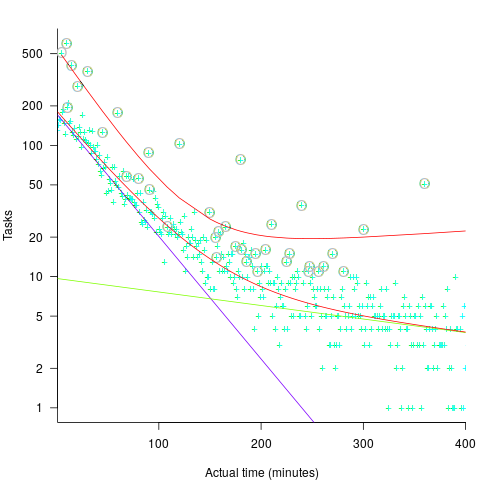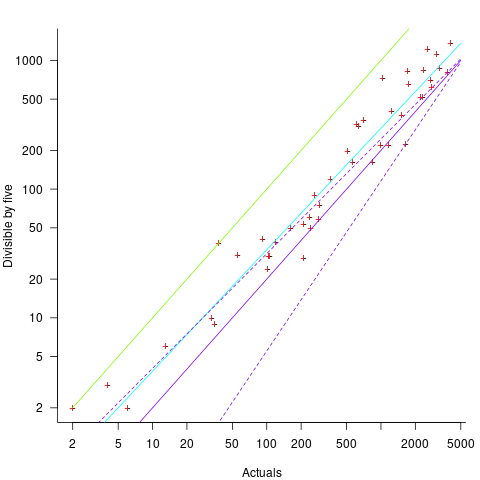Derek Jones from The Shape of Code
Current ideas about the best way of building a software system are heavily influenced by the ideas that captured the attention of previous generations of developers. Can anything of practical use be learned from studying long gone techniques for building software systems?
During the writing of my software engineering book, I was spending a lot of time researching the development techniques used during the twentieth century, and one day I suddenly realised that this was a waste of time. While early software developers tend to be eulogized today, the reality is that they were mostly people who had little idea what they were doing, who through personal competence of being in the right place at the right time managed to produce something good enough. On the whole, twentieth century software development techniques are only of historical interest. Yes, some timeless development principles were discovered, and these can be integrated into today’s techniques (which may also turn out to be of their-time).
My experience of software development in the late 1970s and 1980s is that there was rarely any connection between what management told the world about the development process, and how those reporting to the manager actually did the development.
If you are a manager in a world where software development is still very new, and you are given the job of managing the development of a software system, how do you go about it? A common approach is to apply the techniques that are already being used to run the manager’s organization. On a regular basis, managers came up with the idea of applying techniques from the science of industrial production (which is still happening today).
In the 1970s and 1980s there were usually very visible job hierarchies, and sharply defined roles. Organizations tended to use their existing job hierarchies and roles to create the structure for their software development employees. For years after I started work as a graduate, managers and secretaries were surprised to see me typing; secretaries typed, men did not type, and women developers fumed when they were treated like secretaries (because they had been seen typing).
The manual workers performed data entry, operated the computer (e.g., mounted tapes, and looked after the printer). The junior staff often started with the job title programmer, or perhaps junior programmer and there might be senior programmers; on paper these people wrote the code to implement the functionality specified by a systems analyst (or just analyst, or business analyst, perhaps with added junior or senior). Analysts did not to write code and programmers only coded what the specification they were given, at least according to management.
Pay level was set by the position in the job hierarchy, with those higher up earning more than those below them, and job titles/roles were also mapped to positions in the hierarchy. This created, in theory, a direct correspondence between pay and job title/role. In practice, organizations wanted to keep their productive employees, and so were flexible about the correspondence between pay and title, e.g., during their annual review some people were more interested in the status provided by a job title, while others wanted more money and did not care about job titles. Add into this mix the fact that pay/title levels rarely matched up between organizations, it soon became obvious to all that software job titles were a charade.
How should the people at the sharp end go about building a software system?
Structured programming was the widely cited technique in the 1970s. Consultants promoted their own variants, with Jackson structured programming being widely known in the UK, with regular courses and consultants offering to train staff. Today, structured programming appears remarkably simplistic, great for writing tiny programs (it has an academic pedigree), but not for anything larger than a thousand lines. Part of its appeal may have been this simplicity, many programs were small (because computer memory was measured in kilobytes) and management often thought that problems were simple (a recurring problem). There were a few adaptations that tried to address larger scale issues, e.g., Warnier/Orr structured programming.
The military were major employers of software developers in the 1960s and 1970s. In the US Work Breakdown Structure was mandated by the DOD for project development (for all projects, not just software), and in the UK we had MASCOT. These mandated development methodologies were created by committees, and have not been experimentally tested to be better/worse than any other approach.
I think the best management technique for successfully developing a software system in the 1970s and 1980s (and perhaps in the following decades), is based on being lucky enough to have a few very capable people, and then providing them with what is needed to get the job done while maintaining the fiction to upper management that the agreed bureaucratic plan is being followed.
There is one technique for producing a software system that rarely gets mentioned: keep paying for development until something good enough is delivered. Given the life-or-death need an organization might have for some software systems, paying what it takes may well have been a prevalent methodology during the early days of major software development.
To answer the question posed at the start of this post. What might be learned from a study of early software development techniques is the need for management to have lots of luck and to be flexible; funding is easier to obtain when managing a life-or-death project.




 ) (
) (



 ) (
) (

